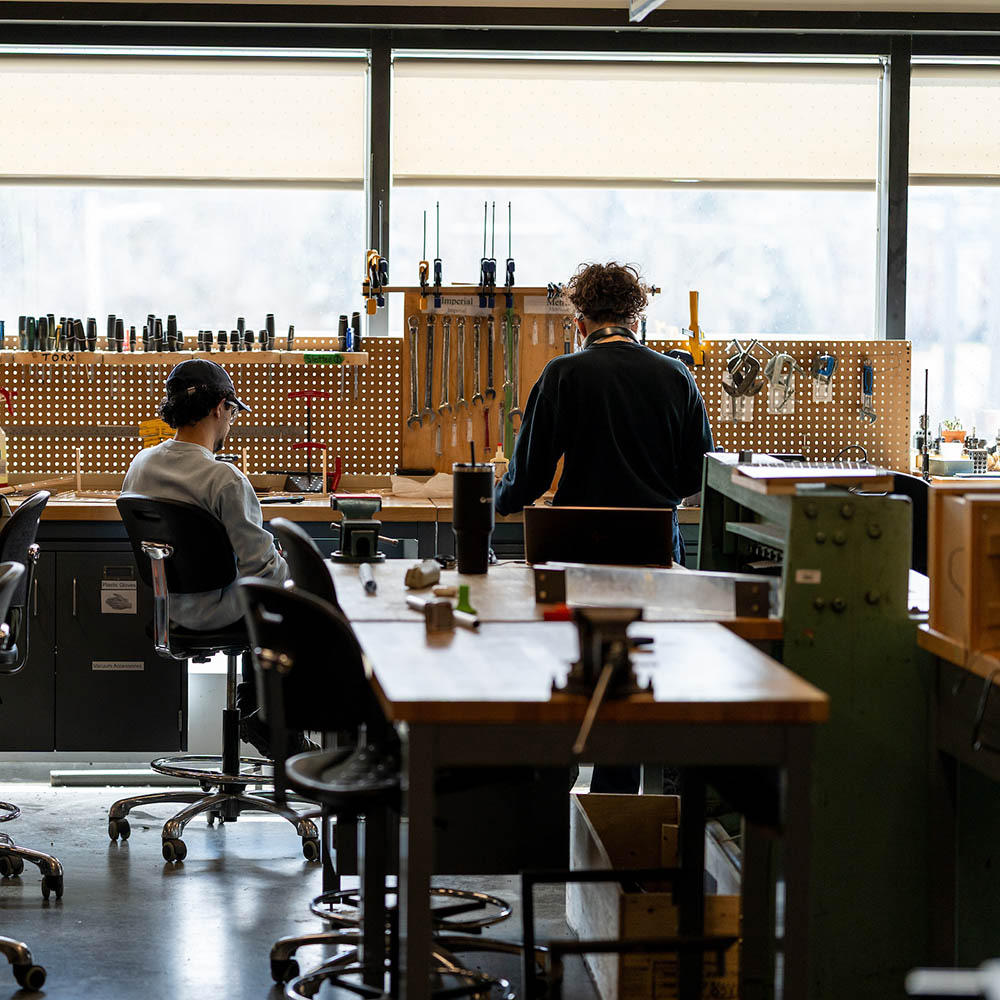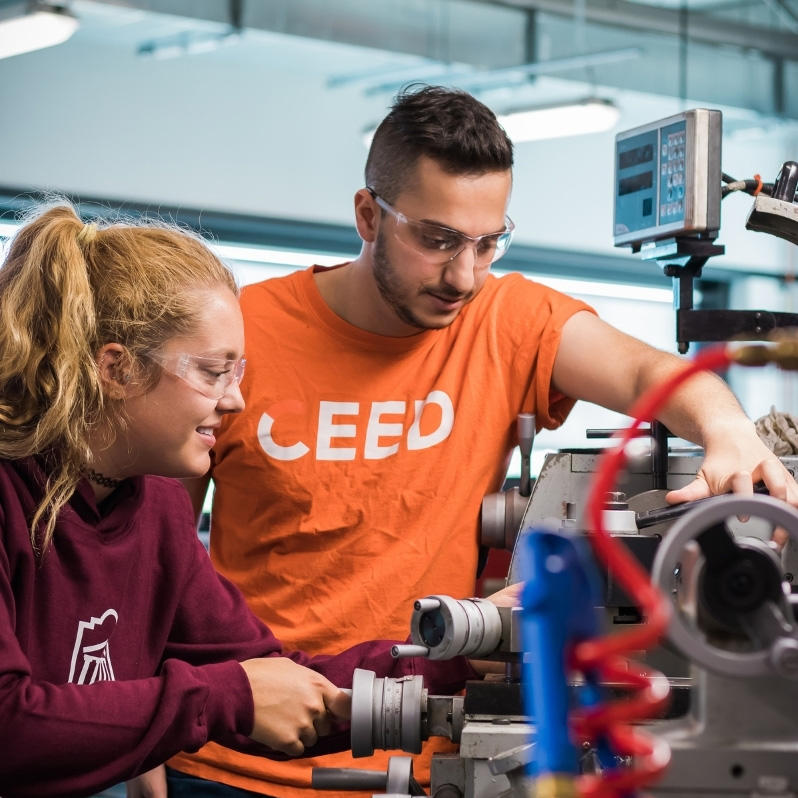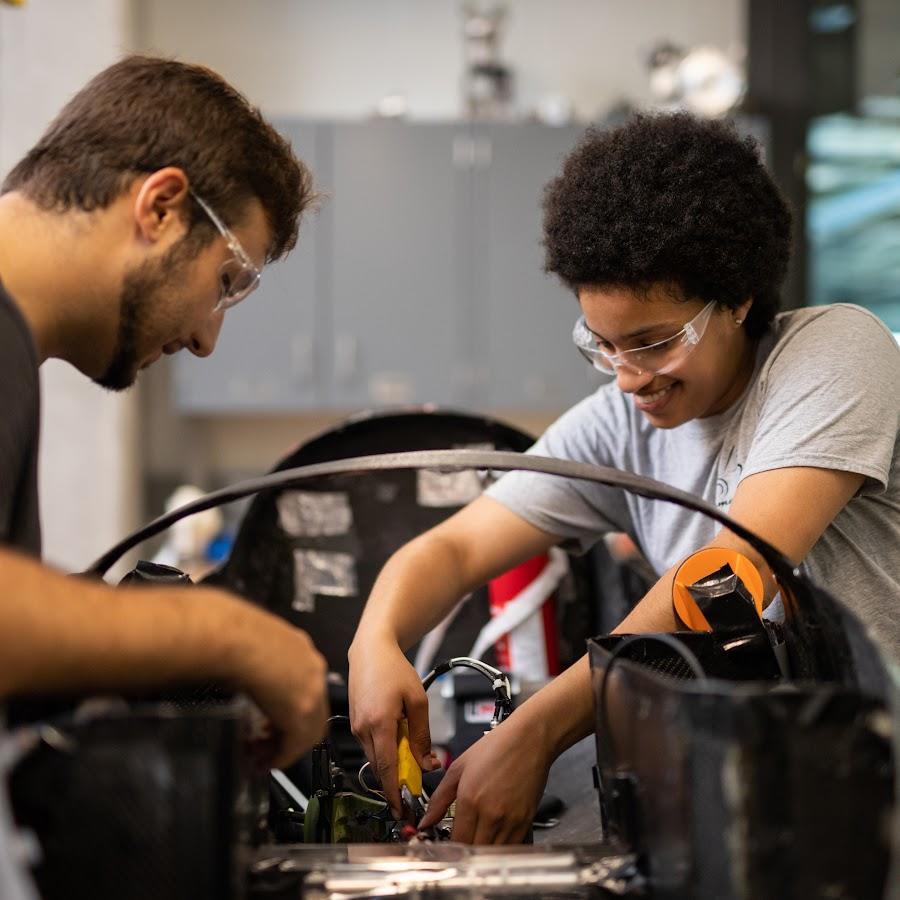“I had never even touched any of those machines before,” says third year computer engineering student Laila Burns. “Now, after about a year or two of working in CEED and participating in workshops and learning, I’m very competent on those machines. I never thought I would have the opportunity to do something like this.”
Launched in 2015, CEED started out as a place for uOttawa engineering students to acquire skills through hands-on learning. Since then, it’s grown into a hotbed of innovation—where students, professors and industry work together to bring ideas to life.
Creating a place where students can ‘tinker’
CEED is the brainchild of Hanan Anis, engineering professor and director of the School of Engineering Design and Teaching Innovation. Her vision was to create a space where students could “roll up their sleeves” and make things—something she never had the chance to do while at university.
“When I was an engineering student, we learned a bunch of math and science. But we never got any experience making things because we were told we were too young,” says Anis. “With CEED, the idea is that every student can play. And through that tinkering, they develop skills.”
The student and alumni-run centre started very small with just one 3D printer and a makerspace where students could work. But over the past decade, new maker, design and training spaces have been added—thanks in part to funding Anis received as an NSERC Chair in Design Engineering in 2015.

“I feel so, so lucky that I’ve had the opportunity to be involved in so many things that have given me hands-on experience and taught me the applications of the things that I’m learning in school.”
Laila Burns
— Third year computer engineering student
Providing a new home for CEED
In 2018, all of CEED’s spaces were brought under one roof when uOttawa’s new STEM Complex opened its doors. Today, the complex is home to the MakerLab, Manufacturing Training Centre, Simon Nehme Design Commons, Richard L’Abbé Makerspace, John McEntyre Team space, Brunsfield Centre (for designing, making and testing complex prototypes) and the Sandbox, a place for teams to work on projects.
Many of the CEED workspaces were made possible with generous support from alumni donors.
Alumna Khatra Badreldin says having all of the spaces in one place was a game changer for her as a co-op engineering student from 2016 to 2021 and member of uOttawa’s Concrete Toboggan and Formula SAE teams. Moving CEED into the STEM building offered a more integrated learning experience.
“We had more time to put together the car or the toboggan,” says Badreldin. “We had a more compound space where we could meet with our teams, discuss the designs and make the changes all in one place.”

“My involvement in CEED helped equip me with everything I needed to do what I’m doing now—from almost a mindset, to change management, to accessing resources, funding, facilities and mentorship.”
Midia Shikh Hassan
— uOttawa alumna and former manager of CEED’s MakerLaunch program
Empowering students through hands-on learning
For Anis, CEED is much more than a physical space to build things. She believes it empowers engineering students to make a real difference in the world and have a positive impact on society.
“Engineers make things, but often they don’t see that their role is to serve society. That is an important lesson if you’re entering engineering,” says Anis. “In order for them to make stuff, there has to be facilities to enable them to do exactly that.”
It’s a lesson that Laila Brown has already learned. In her second year, she worked with three classmates to build a robotic arm for people with disabilities as part of a class project. Since then, they’ve launched their own startup and will soon complete a final prototype of the arm—thanks in large part to CEED.
“By the time the course finished, the product wasn’t safe enough to give to the client, so we decided to just keep working at it,” she says. “CEED gave us the guidance, some of the funding and a lot of the resources that we needed to take this little school project from something that we were playing around with to a product that we’re actually now beta testing and giving to people to make their lives better.”

“CEED transformed my university journey into something much bigger — a launchpad for leadership, creativity, and lifelong skills.”
Zaineb Al-Faesly
— uOttawa alumna and lead engineer, Department of National Defence
According to Anis, experiences like Brown’s are exactly what CEED is all about. Even as technologies change, she’s confident that the centre will continue to nurture the socially-minded and innovative engineers our world needs.
“Industry always complains that when engineers graduate, they’re not ready for the marketplace. The aspiration of CEED is to graduate better engineers—ones that can work in the industry, but also be better citizens.”
This story is part of our continuing series highlighting the impact of the University of Ottawa’s landmark $541 million reIMAGINE campaign. Each story represents our community's commitment to innovation and excellence.
